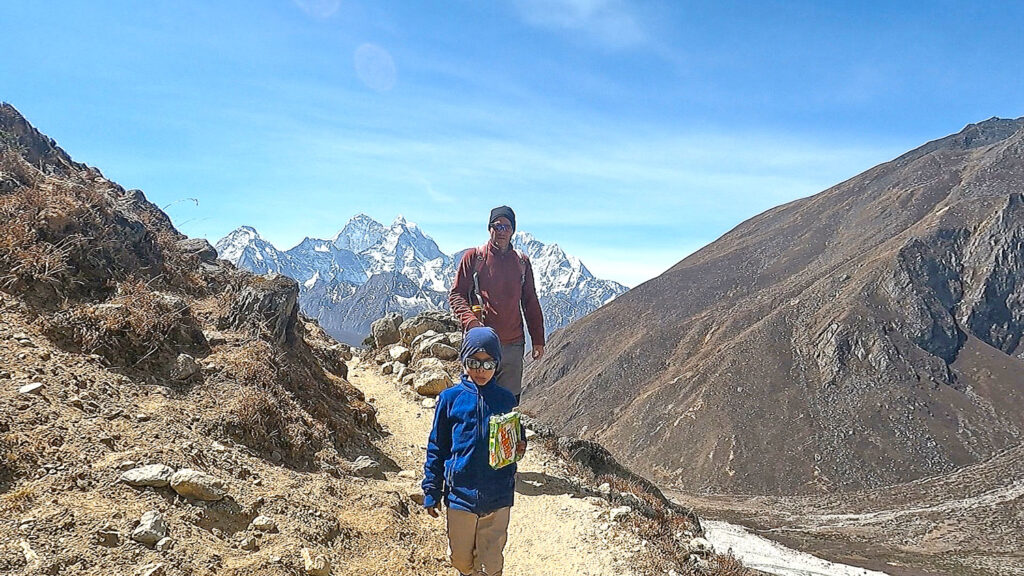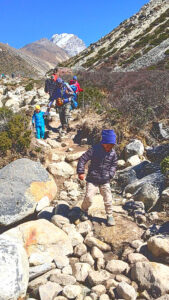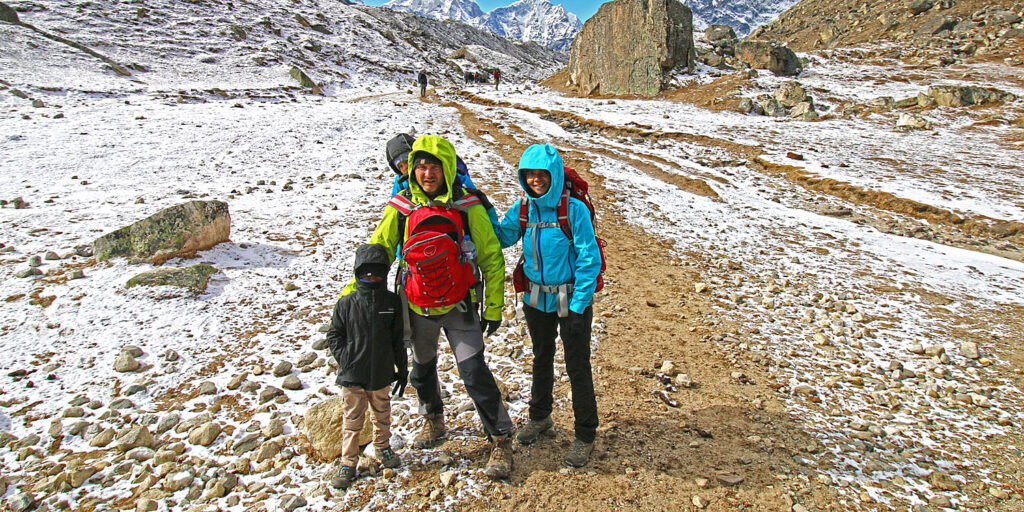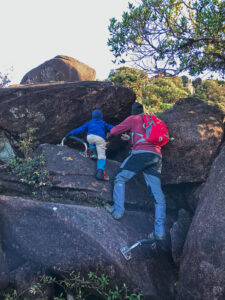With the right training, anyone can trek to Everest Base Camp. To prove this, I took my 5-year old son, Gabriel, who trekked to Everest Base Camp and back unassisted. He also did it while suffering from food poisoning. In April 2022, he became the youngest Australian to trek to Everest Base Camp.
Training is the key, not just to completing an Everest Base Camp trek, but also enjoying the trek itself. The training you complete before your Everest Base Camp trek will determine how you cope with the pressures of trekking over 11 days, covering 103 kilometres, up to an altitude of 5,364 metres.

Our Training Regime for Everest Base Camp
So, you’re probably wondering what training we undertook in order for my 5-year old son to be able to trek to Everest Base Camp on his own.
Weekend Training Regime

As a family, we had trained for 18 months leading up to our Everest Base Camp trek.
Every weekend, we would pick a mountain nearby and climb it. It would take us all day to scale mountains over 1,000 metres high and it became our family weekend outing.
Some weekends we would drive for 1 to 2 hours to get to a tall mountain but we were dedicated.
We chose mountains based on the distance we would cover as well as elevation gain. Every week, we would either increase the distance or the elevation gain as our fitness levels improved.
The longest we ever walked was 22 kilometres in one day; however, this was mostly downhill.

Multi-Day Hikes
Prior to Everest Base Camp, we had only ever done one multi-day hike.
Four months before our trip to Everest Base Camp, we trekked for four days in Kosciuszko National Park. Here, we climbed the ten highest mountains in Australia, including Mt Kosciuszko, one of the Seven Summits on the Bass List.
For this trip, we carried our own bags, including sleeping gear, as we were camping in a national park.
How Our Training Helped Our Everest Base Camp Trek

Needless to say, we were well trained for our Everest Base Camp trek.
What we couldn’t train for was trekking at high altitude, adverse weather conditions and succumbing to food poisoning along the way.
The resilience and mental strength we built up during our training program served us well here and this got us to the finish line in the end.
Best Training Duration for Everest Base Camp
The duration you need to train before your trek to Everest Base Camp will be determined by your current fitness level. If you’ve already been training, then your fitness level will be better than someone who has no prior training.
The minimum training duration is two months. If you’re starting from scratch, give yourself two to four weeks to gradually get your fitness level up.
The optimum training duration for an Everest Base Camp trek is four to six months. This duration gives you time to get yourself in peak condition for the long trek ahead.
However, nothing is set in stone. If you feel like you need more or less time, then by all means start earlier or later as you see fit. You are your own best coach.

Best Training Methods for Everest Base Camp
There is no one set method to train for an Everest Base Camp trek.
Below are the best training methods to get you into the best condition for a long and arduous trek. Choose the best method that suits your circumstances and preferences.
1. Mountain Climbing

The best method and the method we use is to ‘just climb’. It’s the closest training you can get to the actual trek to Everest Base Camp.
Climbing is a highly skill-dependent sport requiring a broad range of knowledge, experience and ability. Climbing also uses a group of muscles that require a combination of different exercises to train.
Which is why if you can train your body to climb, you’re doing the best job you can to get your body into shape for Everest Base Camp.
There are different ways to climb. The easiest way is to find some hills or mountains near your house and just climb them. This is the best method because that’s exactly what you’ll be doing trekking to Everest Base Camp.
If that’s not possible, there are two other ways to climb.
If you live in a city with tall buildings, you can climb up and down the stairs.

Alternatively, you can join a gym and use a stairmaster.
This is my least preferred method because machines in a gym are restrictive to your movements, and it’s not reflective of the movement of your body while climbing in real life.
However, if there’s no other option, then that’s the method you can choose to train your body.
2. Track Running

At the end of the day, your body needs endurance training whether you’re climbing or you’re running on a track.
If you can’t climb, the other option is to run.
Find a track near your house and start a running program.
I use the Nike Run Club app which has training programs for 5K, 10K, half marathon and marathon runs. Choose one based on your fitness level and follow the training program.
The Nike Run Club app is a good endurance training program as it includes long runs, recovery runs and speed runs, such as interval training, fartleks and uphill runs. Running can get a bit repetitive, so it’s nice to have a training program that mixes things up for you and keeps it fun and interesting.
3. Strength Training
In addition to endurance training, strength training should also be a part of your training program for Everest Base Camp. Both go hand in hand and are just as important as each other.
The areas you need to focus on are your core, abs and back.
Simple daily exercises such as sit ups, push ups and planks strengthen your core and abs.
Gradually build up the number of reps you complete as you feel your muscles getting stronger.

The easiest and best exercise to strengthen your back is to carry a backpack. You can do this while trekking outside or even while walking around your house. You can do your housework while carrying the backpack you’ll be wearing on your trek.
Another great trick is to do step ups carrying a weighted backpack.
Gradually increase the weight of the backpack to the weight you expect to be carrying on your trek.

4. Free Weights
Using free weights such as barbells and dumbells is another great way to strengthen your core muscle groups.
If you don’t already own a set of weights at home, you can invest in some if you wish to continue your workouts into the future. Alternatively, you can use the free weights at a gym near you.
Exercises for legs include Goblet Squats, Dumbbell Lunges, Dumbbell Romanian Deadlifts, Dumbbell Step Ups and Dumbbell One-Legged Deadlifts.

At the end of the day, you know yourself best. You are the coach of yourself and you call the shots. Listen to your body and don’t push yourself if you’re not feeling up to it.
Gradually improve your endurance and your strength, but don’t try to take shortcuts and do it quickly. It is better to be undertrained than overtrained. Give yourself time and put in the training.
Do you have any other tips for training for the Everest Base Camp trek?
Please leave your comments below.




